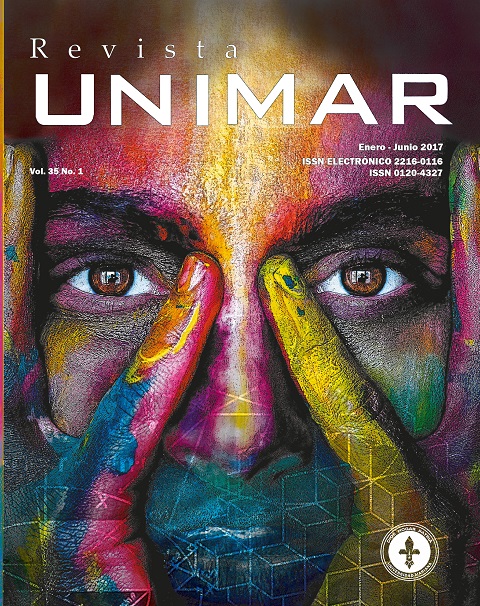Wlingua Tool: Strategy for improving English reading comprehension
Keywords:
Reading comprehension, English, Wlingua programAbstract
Knowing the importance of the English language nowadays for this globalized world, it is necessary to think carefully about students and the process that must be followed so that the acquisition of this foreign language is effective and efficient.For some students, one of the complications of learning a new language, beyond lack of motivation or desire, is to understand a text. Therefore, this article shows the implementation of the Wlingua tool to strengthen reading comprehension in the English language, as a strategy to encourage reading in an interactive, striking and easy way to use.The project was undertaken from the qualitative paradigm, and was approached with the critical social approach and the action-research method.
Author Biographies
Ana Patricia Martínez Pérez, Programa Todos Aprender
Magíster en Pedagogía; Licenciada en Inglés - Español. Docente Tutor, Programa Todos Aprender, Nariño, Colombia.
Paula Andrea Urbano Gómez
Magíster en Pedagogía; Licenciada en Inglés – Francés.
References
Abril, G. (2007). Análisis crítico de textos visuales. Mirar lo que nos mira. Madrid, España: Editorial Síntesis.
Brassel, D. & Rasinski, T. (2008). Comprehension that works. Taking students beyond ordinary understanding to deep comprehension. Huntington Beach: Shell Education.
Buriticá, J. (s.f.). El uso de las TIC en la enseñanza del inglés. Recuperado de http://es.scribd.com/doc/37833893/EL-USO-DE-LAS-TICS-EN-LA-ENSENANZA-DEL-INGLES
Day, R. y Bamford, J. (s.f.). Extensive reading in the second language classroom. Cambridge: Cambridge Language Education.
Delacôte, G. (1997). Enseñar y aprender con nuevos métodos. Barcelona, España: Editorial Gedisa S.A.
Franco, M. (2012). Estrategias de enseñanza para la promoción de la comprensión lectora desde el aprendizaje significativo. Cultura, Educación y Sociedad, 3(1), 175-186.
Graells, P. (2000). Impacto de las Tic en educación: Funciones y limitaciones. Recuperado dehttp://sgpwe.izt.uam.mx/files/users/virtuami/file/ext/miplan_impacto_actv_impactoticeducacion.pdf
Grellet, F. (1999). Developing Reading Skills. New York: Cambridge University Press.
Hernández, R., Fernández, C. y Baptista, P. (2003). Metodología de la investigación (5ª. ed.). México: McGraw-Hill Interamericana.
Latorre, A. (2005). La investigación-acción. Conocer y cambiar la práctica educativa. Barcelona, España: Editorial Graó.
Ministerio de Educación Nacional (MEN). (s.f.). Guía No. 22. Estándares Básicos de Competencias en Lenguas Extranjeras: Inglés. Recuperado de http://www.mineducacion.gov.co/cvn/1665/article-115174.html
Pérez, G. (1994). Investigación Cualitativa I: Retos e interrogantes: Métodos (6ª. ed.). Madrid, España: Editorial La Muralla.
Ponce, H., López, M. & Mayer, R. (2012). Instructional effectiveness of a computer-supported program for teaching reading comprehension strategies. Computers & Education, 59(4), 1170-1183 https://doi.org/10.1016/j.compedu.2012.05.013
Prensky, M. (2001). Digital Natives, Digital Immigrants. Recuperado de http://www.marcprensky.com/writing/Prensky https://doi.org/10.1108/10748120110424816
Ruffinelli, J. (2013). Comprensión de la lectura. México: Editorial Trillas.
Thomas, M., Reinders, H. & Warschauer, M. (Eds.). (2013). Contemporary Computer-Assisted Language Learning. Bloomsbury Academic.
How to Cite
Downloads
Languages:
esDownloads
Published
Issue
Section
License
Copyright (c) 2018 Revista UNIMAR

This work is licensed under a Creative Commons Attribution 4.0 International License.
Los autores que publiquen en esta revista aceptan las siguientes condiciones:
1. Los autores conservan los derechos de autor y ceden a la revista el derecho de la primera publicación, con el trabajo registrado con la licencia de atribución de Creative Commons, que permite a terceros utilizar lo publicado siempre que mencionen la autoría del trabajo y a la primera publicación en esta revista.
2. Los autores pueden realizar otros acuerdos contractuales independientes y adicionales para la distribución no exclusiva de la versión del artículo publicado en esta revista (p. ej., incluirlo en un repositorio institucional o publicarlo en un libro) siempre que indiquen claramente que el trabajo se publicó por primera vez en esta revista.
3. Se permite y recomienda a los autores publicar su trabajo en Internet (por ejemplo en páginas institucionales o personales) antes y durante el proceso de revisión y publicación, ya que puede conducir a intercambios productivos y a una mayor y más rápida difusión del trabajo publicado (veaThe Effect of Open Access).
Altmetric
| Article metrics | |
|---|---|
| Abstract views | |
| Galley vies | |
| PDF Views | |
| HTML views | |
| Other views | |








